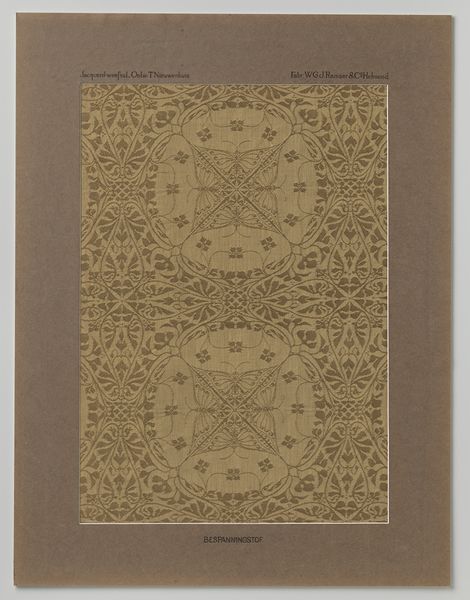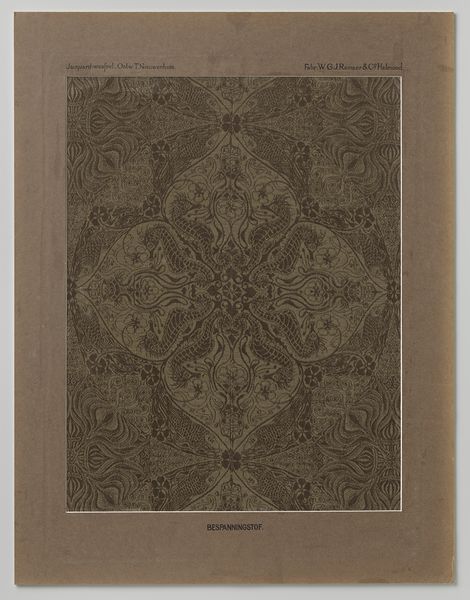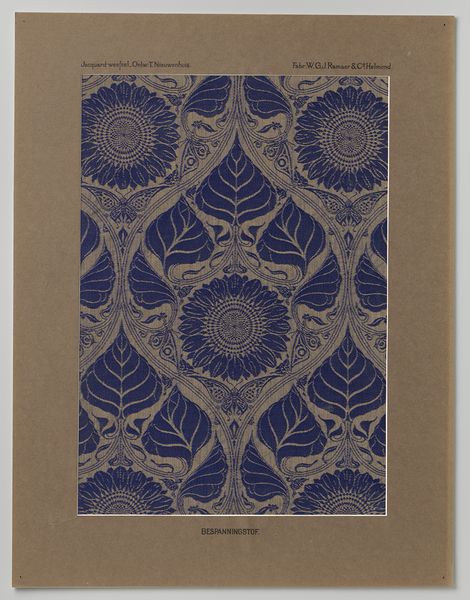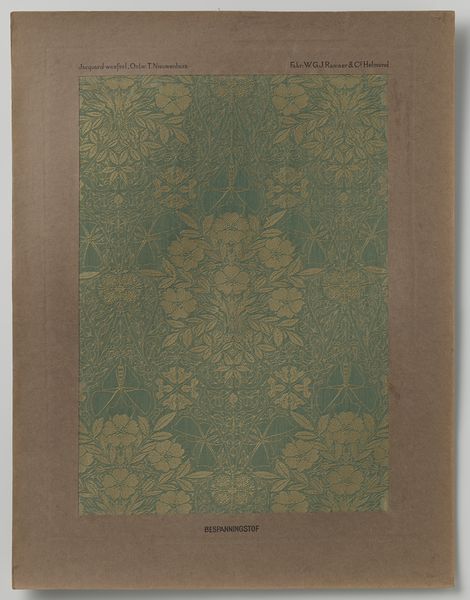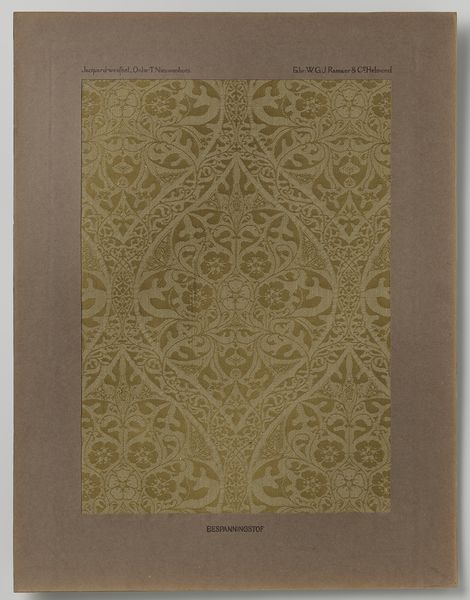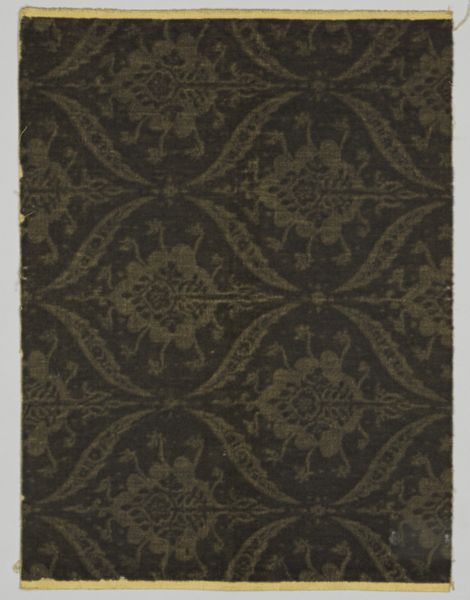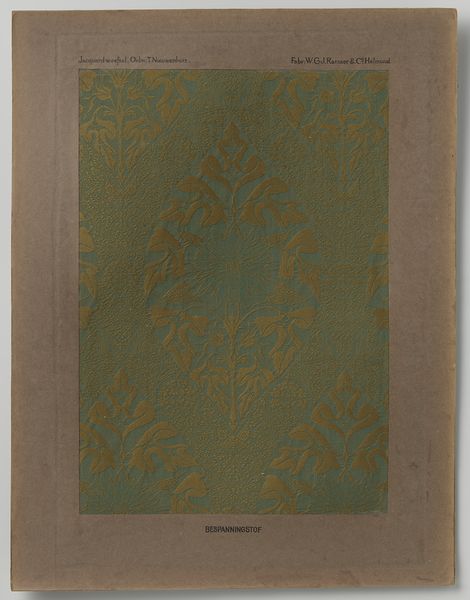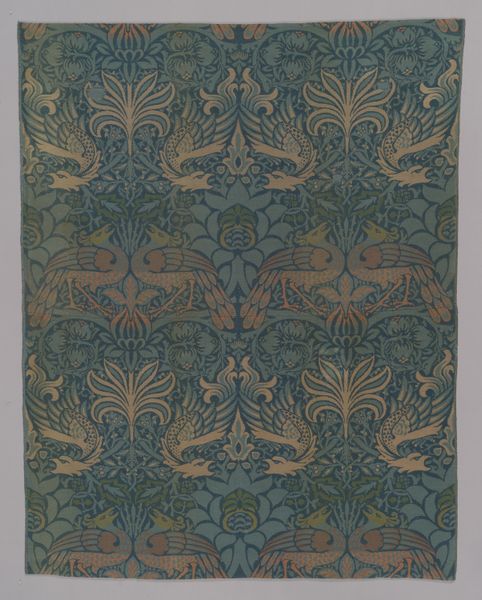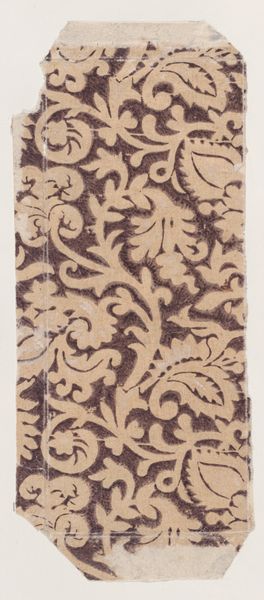
Staal bespanningsstof naar ontwerp van Theo Nieuwenhuis in passe-partout c. 1910
0:00
0:00
graphic-art, print, textile
#
graphic-art
#
natural stone pattern
#
art-nouveau
# print
#
pattern
#
textile
#
linocut print
#
geometric
#
pattern repetition
#
decorative-art
Dimensions: height 64.0 cm, width 48.5 cm
Copyright: Rijks Museum: Open Domain
Editor: So this is "Staal bespanningsstof naar ontwerp van Theo Nieuwenhuis in passe-partout," from around 1910. It's a print of a textile design. What strikes me is the kind of muted, earthy palette... What do you see in this piece? Curator: I see a conversation between nature and industry, a yearning for organic forms translated into a mechanically reproducible design. Notice the stylized floral motifs, repeated in a mirrored symmetry. How does this structured repetition impact you? Editor: I find the symmetry quite comforting, but also maybe a little... rigid? Like nature is being forced into a mold. Curator: Precisely. Consider the historical context: the rise of industrial production and its impact on traditional crafts. These motifs echo Art Nouveau, a movement attempting to reconcile machine-made with handmade aesthetics. It borrows organic forms to soften the impact of the industrial age. Do you see any recurring symbolic elements? Editor: I guess the flowers are symbols of nature, maybe the vines represent growth... but what do the diamond shapes surrounding the flowers symbolize, if anything? Curator: That’s an astute observation. Geometric shapes evoke precision, structure, perhaps the human intellect imposing order on nature's perceived chaos. How might this interplay between floral and geometric impact the viewing experience? Editor: So, it is kind of about control? Maybe the flowers trapped within the diamonds symbolize a loss of freedom or autonomy? Curator: That is a valuable association. Overall, it feels like a statement, an elegy to pre-industrial organic design but firmly couched in modern mass production. Editor: I learned to notice conflicting messages. Thanks.
Comments
No comments
Be the first to comment and join the conversation on the ultimate creative platform.
